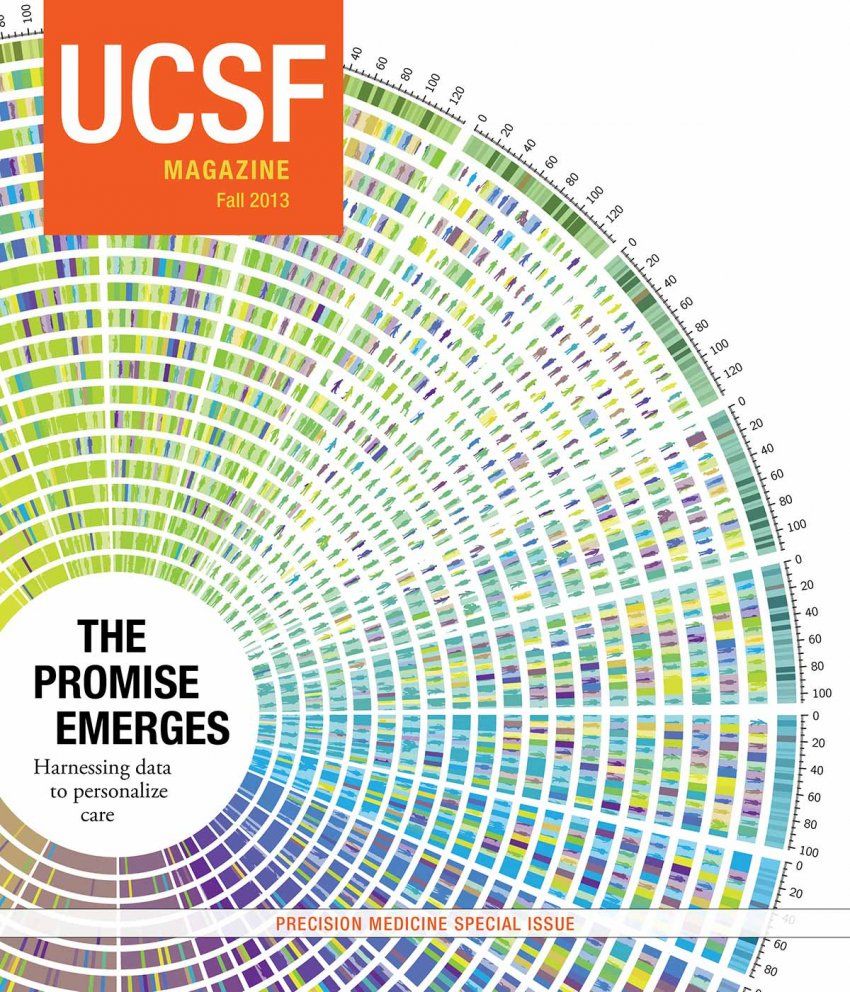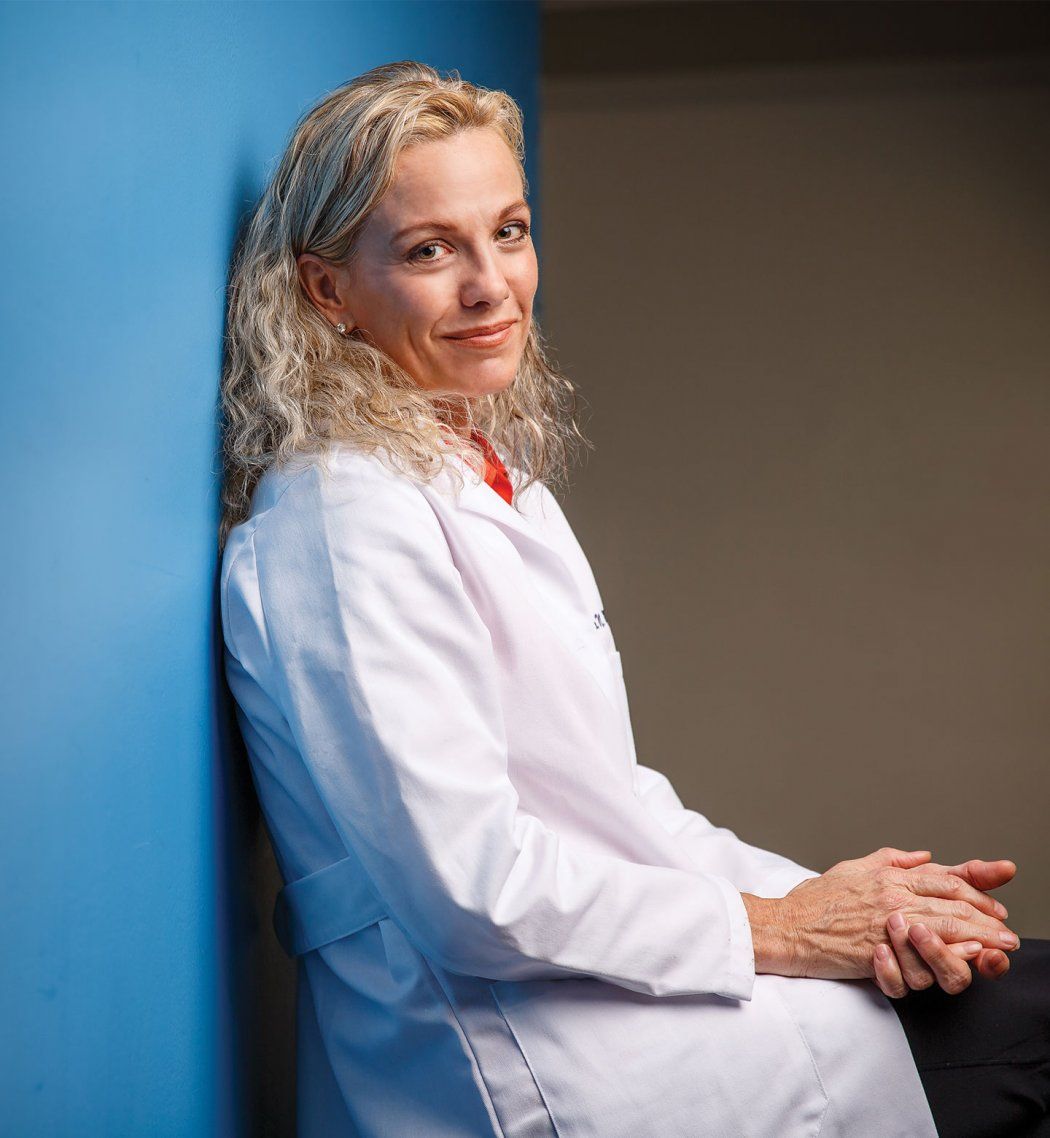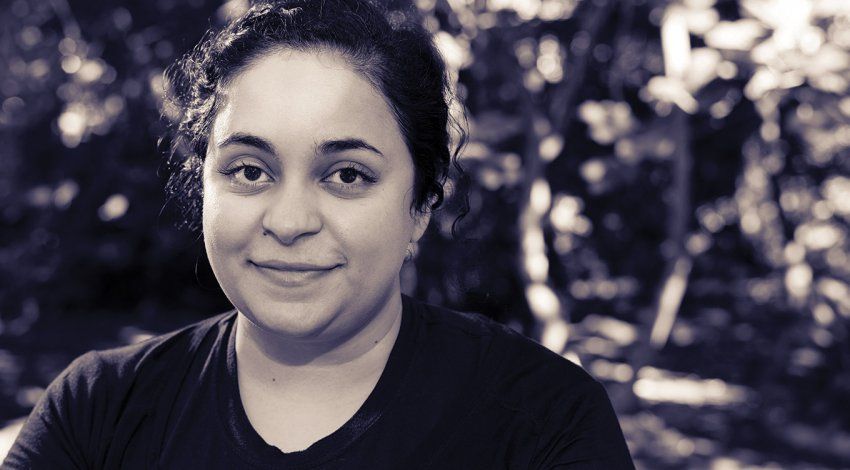
Pamela Munster, MD, is program leader of Developmental Therapeutics at UCSF’s Helen Diller Family Comprehensive Cancer Center. She shares a breast cancer story here – her own.
You know how you can just tell when something is wrong? Well, I was skiing in Montana with some friends when we started to plan a 50th birthday trip to Alaska, two years later. I suddenly thought, “How do I know I’ll still be alive in two years?” The next Monday I walked straight into clinic and told my nurse practitioner I needed a mammogram. A few days later I got the call saying they wanted me to come back for more tests. Do you know how many times I have made that phone call to my own patients?
I had a very early form of cancer in one breast. While some might have had just one breast removed, I chose to have a double mastectomy because I was young for the diagnosis. Yet, even after the operation, I still felt there was something amiss. So I took a blood test to see if I had a mutation in my BRCA1 or BRCA2 genes. These are genes that, if abnormal, increase the risk for breast and ovarian cancer in women and for prostate cancer in men – and put both genders at increased risk for melanoma and pancreatic cancer. My probability of having this mutation was less than 1 percent because I have no family history of these diseases. I took the test anyway because I was under 50. My suspicions were confirmed: I have the BRCA2 mutation. It gives me an 85 percent chance of developing breast cancer and a 40 percent chance of developing ovarian cancer.
I can’t tell you how many times patients have asked, “What would you do?” So I have reflected on this question countless times. I have never once had doubts about the double mastectomy, even before I knew about the mutation. I had my ovaries removed as well. I am settling slowly into the knowledge that I have a higher risk of developing pancreatic cancer and melanoma. My father was just diagnosed with pancreatic cancer last week. Honestly, when you have a known cancer mutation, you’re never out of the woods.
I have three children – two sons, 12 and 13, and a 9-year-old daughter. Of course I am very curious about their genetic status, but we are a very empowered and independent family and I want them to eventually make that decision themselves. Typically, when BRCA2 is present in a family, aggressive screening is done at age 35.
For me, the difficult decisions early on were whom do I tell and how do I deal with the fact that I have what I treat? I was a little worried about how my patients would feel if they knew that all of a sudden I’d become one of them. For my patients who know, it has been a positive. Once, I was talking with a patient who had had a bilateral mastectomy and was feeling really depressed. I asked her what was wrong. She said that I just didn’t get it. I told her that I knew exactly how it is – that I had been sitting in the very same exam room just one year before. “But you look so beautiful and upbeat,” she said to me. I told her, “So will you in a few months, I promise.” It was powerful, knowing exactly what this patient was experiencing and being able to coach her through it.
My diagnosis and the operations I have had have given me a visceral understanding of how vulnerable cancer leaves you. It was hard for me to surrender control to someone else. But perhaps even more difficult was the nature of the surgeries. I identify not just as a doctor and a scientist, but also as a mother and a woman, and I had had the very organs that define me as a woman removed. A skilled plastic surgeon made me feel whole again. The care and love my team lavished on me left me with minimal scars. Of course my experience made me think about Angelina Jolie and how potent her voice has been for young women facing cancer. Angelina personifies beauty and femininity the world over. Cancer can’t change that.
I am sharing my story because, as a scientist, I want people to know that you can live with cancer. As a doctor, I know how unpredictable cancer is. As a patient, I have faced my mortality.”
I am sharing my story because, as a scientist, I want people to know that you can live with cancer. As a doctor, I know how unpredictable cancer is. As a patient, I have faced my mortality.
But I’m lucky. Every day, I get to work in a lab and with patients to develop and apply new cancer therapies. It’s not just my job, it’s my passion. I am often up at 2 a.m., searching for a pencil to write down all the ideas rushing through my head. It’s why I was back at work two days after surgery; even my plastic surgeon made fun of me. Of course, now I am motivated in part by my disease and by the possibility of my children having the same mutation. But my own universe is not everything. I am also driven by every patient I have ever seen whom I felt I couldn’t help.
I have always been blessed with the ability to see some good in anything bad, and there has been plenty of good along the way. Professionally, I have never been more energized. The recent Supreme Court ruling banning the patenting of genes could unleash mountains of critical information about BRCA mutations if patients’ rights activists win their fight to access it. That data would be put to good use in my lab. We have plenty to work with, though, while we wait. We are already well aware of the specific pathway that BRCA tumors follow, so we know where to set up the roadblocks. I am not just hopeful; I’m confident.
Personally, I now realize that saying each day is precious is far different than knowing it. I have gone from being a woman who needs no one to being someone who can ask for support. People came out of the woodwork to help me, and my family stood strong.
The other day my daughter asked me, “Are you done with that cancer now, Mommy?” I got to say, “I’m working on it, honey.”
What could be more powerful than that?




